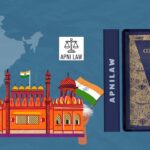Introduction
The abrogation of Article 370 on August 5, 2019, changed India’s constitutional history. This Article gave special status to the former state of Jammu and Kashmir, allowing it to make its own laws except in areas such as defense, foreign affairs, and communications. The Central Government’s move to revoke it through Presidential Orders and the Jammu and Kashmir Reorganisation Act, 2019, transformed the state’s relationship with the Union.
This decision also split the state into two Union Territories, Jammu and Kashmir (with a legislature) and Ladakh (without a legislature). It sparked nationwide debate on federalism, constitutional law, and the future of Indian democracy.
Historical Background of Article 370
Article 370 was added to the Constitution in 1949 as a temporary provision. It was meant to reflect the unique situation after Jammu and Kashmir’s accession to India in 1947. The state kept its own Constitution, flag, and control over internal matters. India handled defense, foreign policy, and communication.
Over time, many of these powers reduced. Through Presidential Orders, several parts of the Indian Constitution were extended to the state. Yet, Article 370 remained a symbol of India’s asymmetric federalism, where some regions enjoyed special autonomy.
Legal Process of Abrogation
The abrogation of Article 370 happened through a mix of executive action and constitutional interpretation. On August 5, 2019, the President issued the Constitution (Application to Jammu and Kashmir) Order, 2019 under Article 370(1). This made all provisions of the Indian Constitution apply to the state.
Another step was the amendment of Article 367, which defines constitutional terms. The phrase “Constituent Assembly of Jammu and Kashmir” was changed to mean “Legislative Assembly of the State.” Since Jammu and Kashmir was under President’s Rule, Parliament acted in place of the State Assembly.
The President then issued a second order under Article 370(3), declaring the Article null and void. Parliament also passed the Jammu and Kashmir Reorganisation Act, 2019, dividing the state into two Union Territories, Jammu and Kashmir and Ladakh.
Legal and Constitutional Debate
The move raised serious constitutional questions. Critics argued that the Constituent Assembly no longer existed, so Article 370 had become permanent. They said replacing it with the Legislative Assembly changed the Constitution’s meaning without due process.
Supporters saw the step as long overdue. They argued that Article 370 had become irrelevant because the state was already deeply integrated into India. They believed Parliament had full authority under President’s Rule to make such a decision.
The Supreme Court later received petitions challenging the legality of the move. Many claimed it undermined India’s federal structure. The court’s final judgment is expected to clarify how far Parliament’s powers extend in such constitutional matters.
Political and Administrative Impact
The abrogation brought massive political and administrative change. The statehood of Jammu and Kashmir ended, and it became a Union Territory. All central laws now apply directly, replacing older state laws like the Ranbir Penal Code with the Indian Penal Code.
The region’s separate Constitution and flag were abolished. The move extended several welfare laws, anti-corruption measures, and social justice programs to Jammu and Kashmir. Supporters hailed it as a step toward development and equal rights.
However, several local political leaders and groups saw it as a blow to democracy and regional identity. They argued that decisions about the state should involve its people.
Federalism and Democracy
The abrogation of Article 370 reshaped India’s federal balance. For critics, it reflected central dominance over states. They warned it weakened cooperative federalism, where the Union and states share power.
Supporters, however, said it strengthened national unity. According to them, the move ensured that every Indian citizen enjoys the same rights, regardless of their region. They called it a fulfillment of the vision — “One Nation, One Constitution.”
In the aftermath, communication restrictions and the arrest of political leaders drew global attention. The government justified these steps as temporary security measures to prevent violence.
Security and Development
Since 2019, the government has reported improvement in law and order, a decline in terror activities, and an increase in infrastructure projects. Roads, healthcare centers, and educational institutions have expanded across the Union Territories.
Still, concerns remain about the restoration of statehood and the timing of elections. Many citizens and political groups continue to demand the return of full democratic governance.
FAQs
1. Why did the government revoke Article 370?
The government said it wanted to promote equality, unity, and faster development by fully integrating Jammu and Kashmir into India.
2. How was the abrogation legally carried out?
It was done using Presidential Orders under Article 370(1) and (3), and through the Jammu and Kashmir Reorganisation Act, 2019, which divided the region into two Union Territories.
3. What is Jammu and Kashmir’s current status?
Jammu and Kashmir is a Union Territory with a legislature, while Ladakh is a Union Territory without one. Both are governed under the Indian Constitution.
Conclusion
The abrogation of Article 370 changed the constitutional structure of India and redefined its federal system. It ended a decades-old special arrangement, integrating Jammu and Kashmir completely into the Indian Union.
Supporters call it a bold step toward equality and progress. Critics see it as a move that reduced state autonomy and democratic consultation. Regardless of opinion, it stands as a turning point in India’s constitutional history, shaping future debates on federalism, democracy, and national identity.
For any specific query call at +91 – 8569843472







